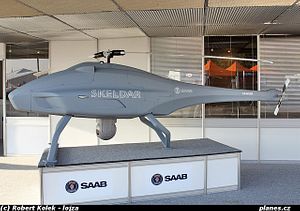Indonesia has become the first customer to receive and test the Skeldar-V-200 rotary-unmanned aerial vehicle (UAV), the Swiss developer announced last week.
UMS Skeldar said in a press release that the Indonesian defense ministry had deployed the platform – which it describes as a multirole helicopter UAV suited for a wide range of applications from reconnaissance to electronic warfare – as part of performance and acceptance tests during the fourth quarter of 2016.
This has “pav[ed] the way for procurement and pilot training in Indonesia,” the company said. No further details were publicly provided on the nature of the contract.
Indonesia is logical market for UMS Skeldar, a joint venture between Saab and UMS Aero Group, both in terms of its geopolitical heft as well as its geography. Indonesia, Southeast Asia’s biggest economy and a member of the G-20, is a sprawling archipelago with the world’s second longest coastline, providing a good demonstration case for the territorial and maritime applications of such platforms.
At the same time, Jakarta is just one of the partners that the company is focusing on within the Asia-Pacific, which company CEO Jakob Baumann described as a “priority region.” Another target market is India. UMS Skeldar has signed a memorandum of understanding with 3F Advanced Systems, a subsidiary of 3F Group India as part of the “Make in India” technological development program. The platform will also be demonstrated at Aero India 2017 as part of what the company says will be the first ever live flight demonstration at an air show.
According to company specifications, the Skeldar-V-200 has a maximum airspeed of 140 km/h (75 knots), a service ceiling of 3000m (9842 feet), a maximum take-off weight of 235 kilogram (518 pounds), and an endurance of more than five hours depending on both the size of the fuel tank module as well as the payload configuration.

































